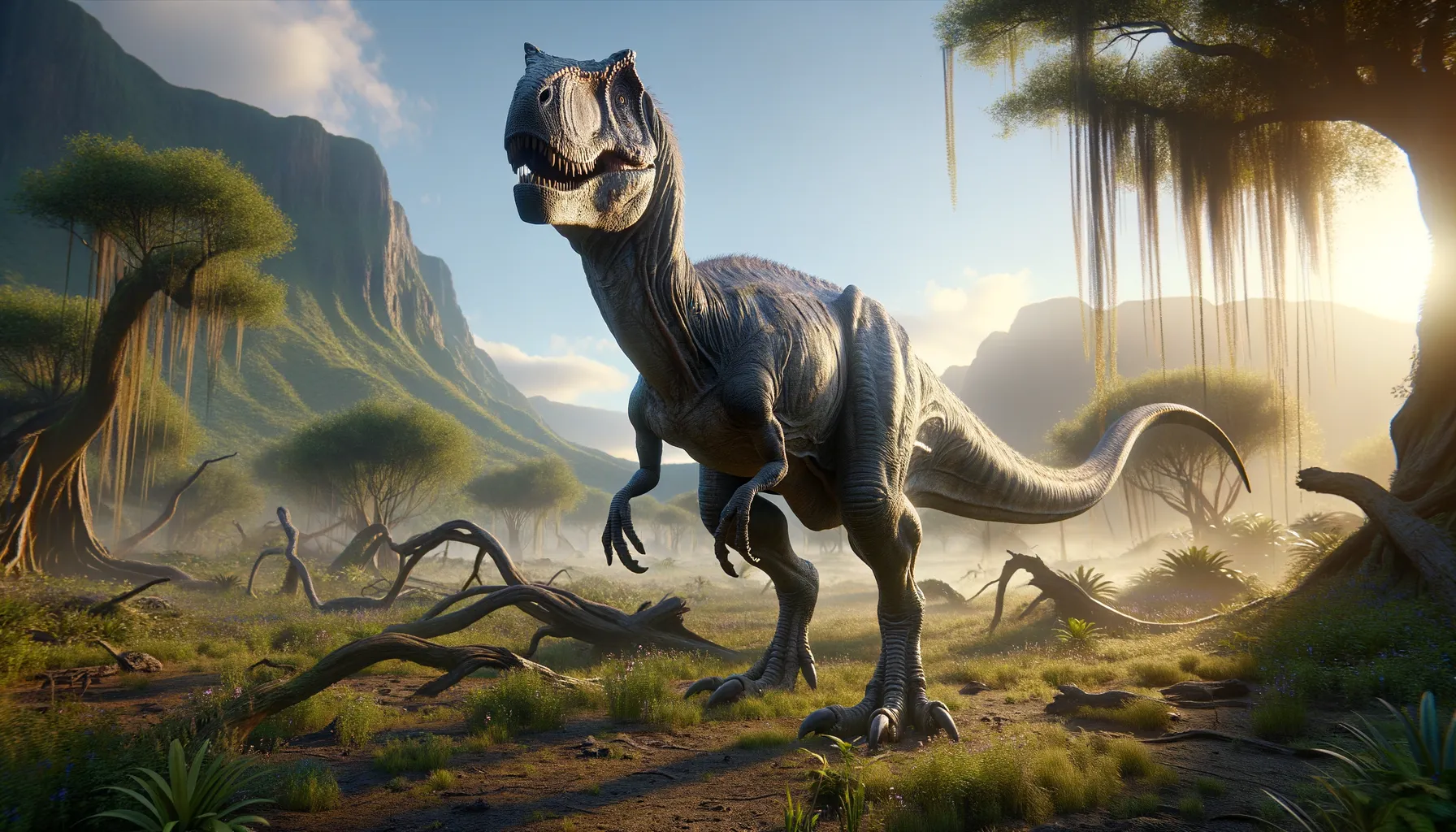
Tanycolagreus
Swift and stealthy in Jurassic landscapes.
Period
Jurassic
Length
Around 13 to 16 feet long.
Height
Approximately 6 feet tall at the hip.
Weight
Roughly 300 to 400 pounds.
Tanycolagreus was a nimble bipedal dinosaur that roamed the Earth during the Jurassic period, showcasing a blend of speed and agility. Its lightweight body and relatively long legs suggest it was a proficient hunter or scavenger. Paleontologists find its preserved skeletal structures crucial for understanding smaller theropods and their ecological niches. The discovery of Tanycolagreus adds valuable insight to the diverse and complex ecosystems that existed millions of years ago.
Diet
Tanycolagreus was likely a carnivore or omnivore, preying on small animals or scavenging. Its diet could have included smaller dinosaurs, mammals, or eggs.
Hunting
The dinosaur likely relied on its speed and agility to catch prey, targeting smaller animals for meals. It might have also scavenged remains left by larger predators, a common practice among theropods.
Environmental challenges
Living in a diverse ecosystem, Tanycolagreus faced competition for food from larger predators and other theropods. Seasonally changing climates may have influenced its hunting strategies and habitat preferences. The fluctuating availability of resources, such as water and prey, might have challenged its survival, requiring adaptation to different conditions and environments.
Speed
Tanycolagreus could likely run fast for short bursts.
Lifespan
It possibly lived for several decades.
First discovery
Discovered in the late 1990s in Wyoming, USA.
Fun Facts
- Tanycolagreus was a relatively small dinosaur, only about 10 feet long, making it about the size of a large dog.
- Its name means 'long forearm hunter', referring to its distinctive long arms which were likely useful for catching prey.
- Tanycolagreus lived during the late Jurassic period, around 150 million years ago.
- It was a meat-eater, with sharp teeth and claws that suggest it hunted small animals and possibly scavenged.
- Fossils of Tanycolagreus have been found in what is now Wyoming, USA, which was a lush environment during its time.
- It belonged to a group of dinosaurs known as theropods, which also includes the famous Tyrannosaurus rex.
- Despite being discovered fairly recently in 2005, Tanycolagreus is helping scientists learn about the diversity of dinosaur species in the Jurassic period.
Growth and Development
Tanycolagreus likely experienced rapid growth during its juvenile stages, reaching adult size relatively quickly. Its development included forming strong, quick-moving limbs crucial for hunting and defense. The growth rates and changes in body proportions might have varied based on environmental pressures and nutrient availability.
Habitat
Tanycolagreus inhabited regions with mixed environments, from forests to open plain areas. It likely preferred habitats that offered ample cover for stalking prey and opportunities to use its speed effectively. The presence of water sources would have been vital for sustaining life and supporting diverse flora and fauna.
Interaction with other species
As a medium-sized theropod, Tanycolagreus had to navigate a world filled with larger predators and potential competitors. This dinosaur might have engaged in opportunistic feeding, taking advantage of the kills of larger theropods. Its interactions with herbivorous species would have been predominantly predatory, contributing to the food chain dynamics of its time.
Natural lifespan
Tanycolagreus could potentially live up to 30 years or more.
Reproduction
Like many theropods, Tanycolagreus likely laid eggs in clutches, potentially in nests. Parental care post-hatching is uncertain, but protecting young from predators might have been essential. The reproductive strategies may have involved selecting safe nesting sites and synchronizing breeding to optimize survival rates for offspring.
Social behaviour
It is uncertain if Tanycolagreus was solitary or social, but some theropods demonstrated pack-like behavior. The possibility of living in small groups could have enhanced hunting success and offered protection from larger predators. Social interactions may have included communication through vocalizations or visual displays.
Fossil locations
Fossils of Tanycolagreus have been predominantly found in Wyoming, USA. Discoveries have shed light on the variety of theropod species of the Jurassic era. These fossil sites provide crucial insights into the paleobiogeography of the time.
